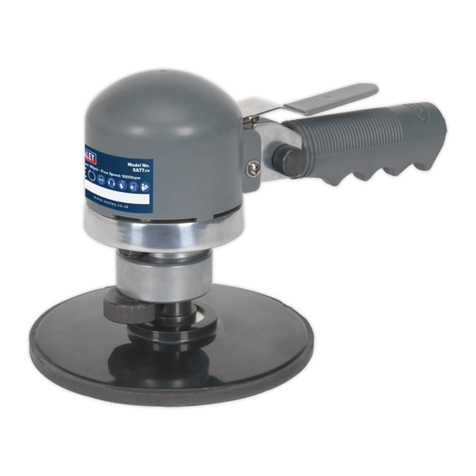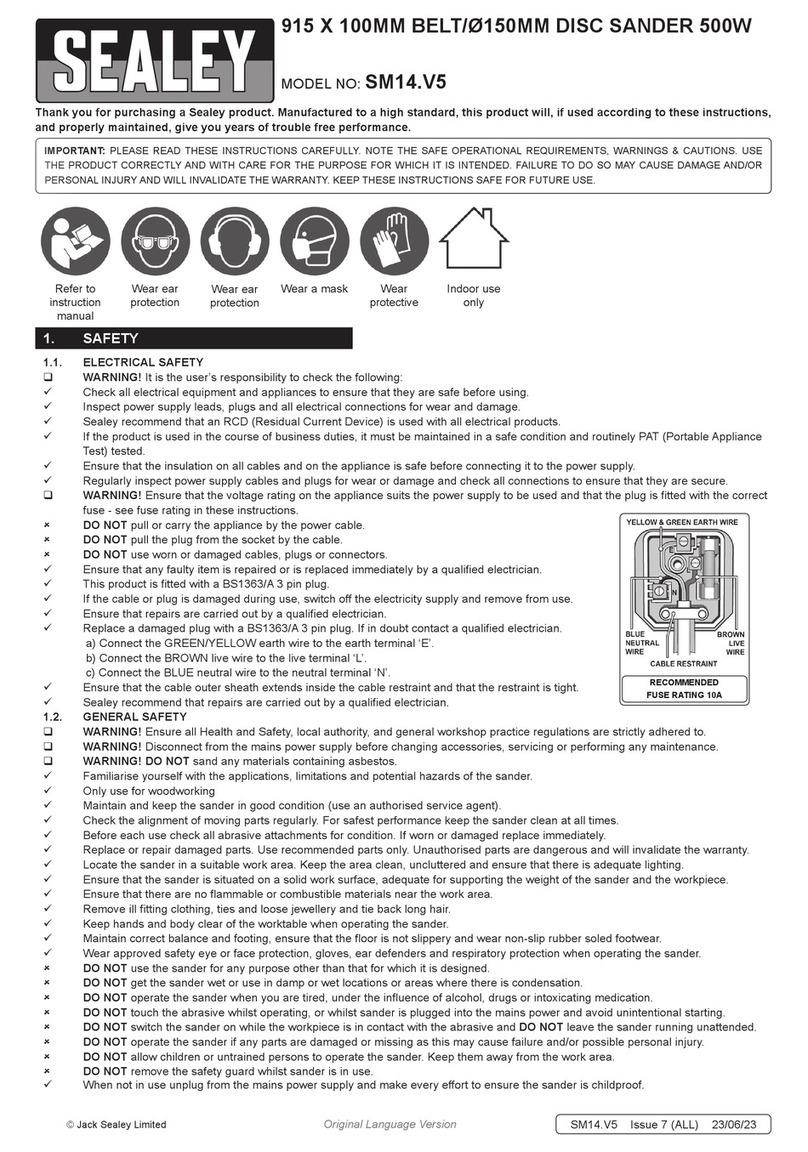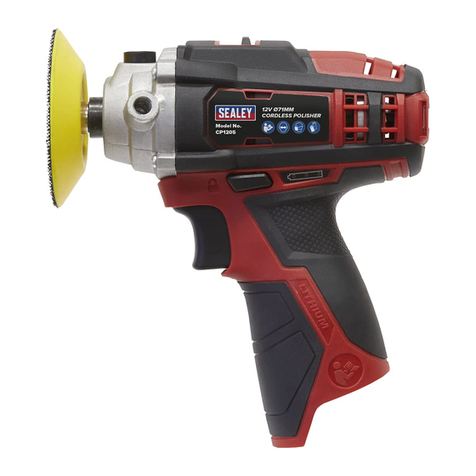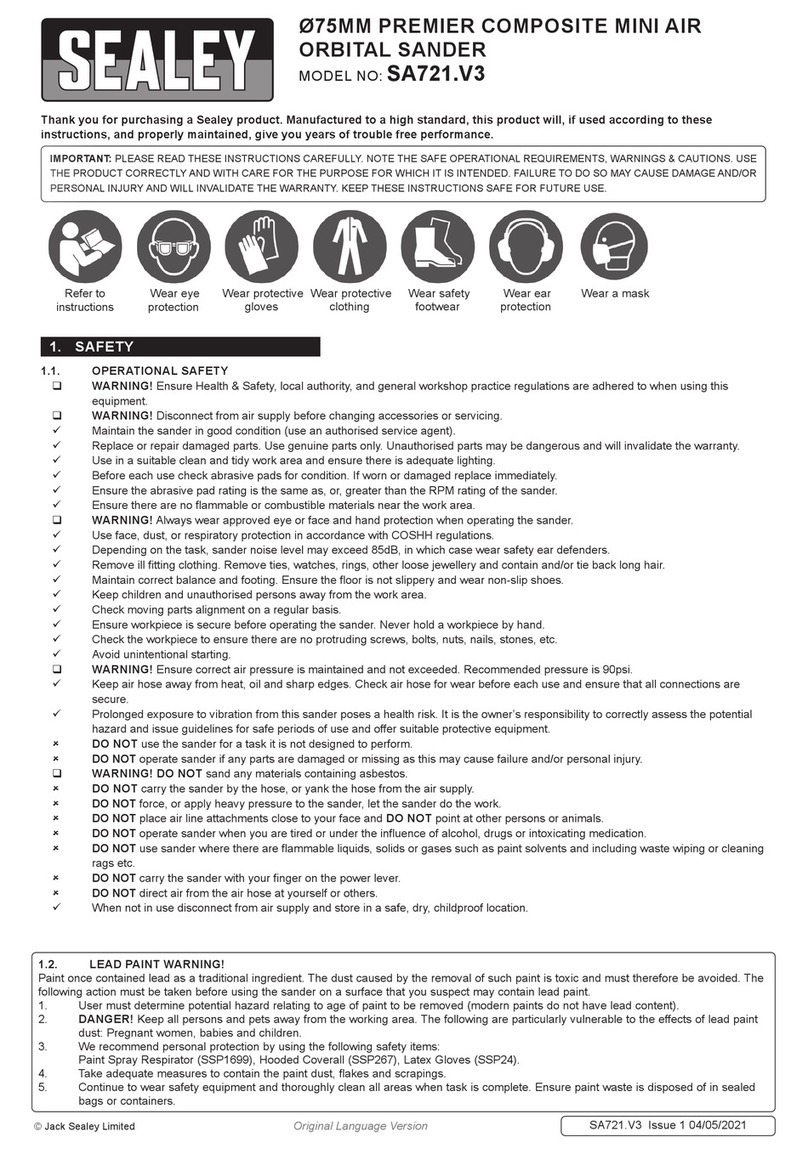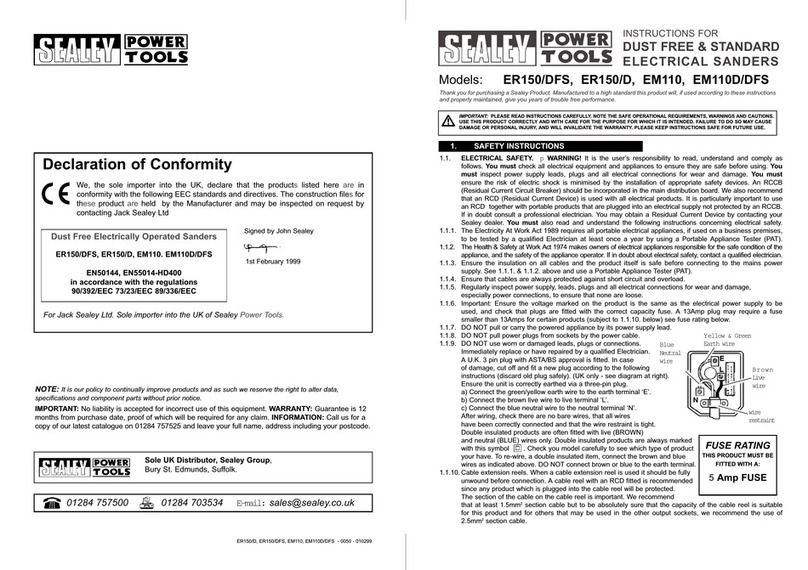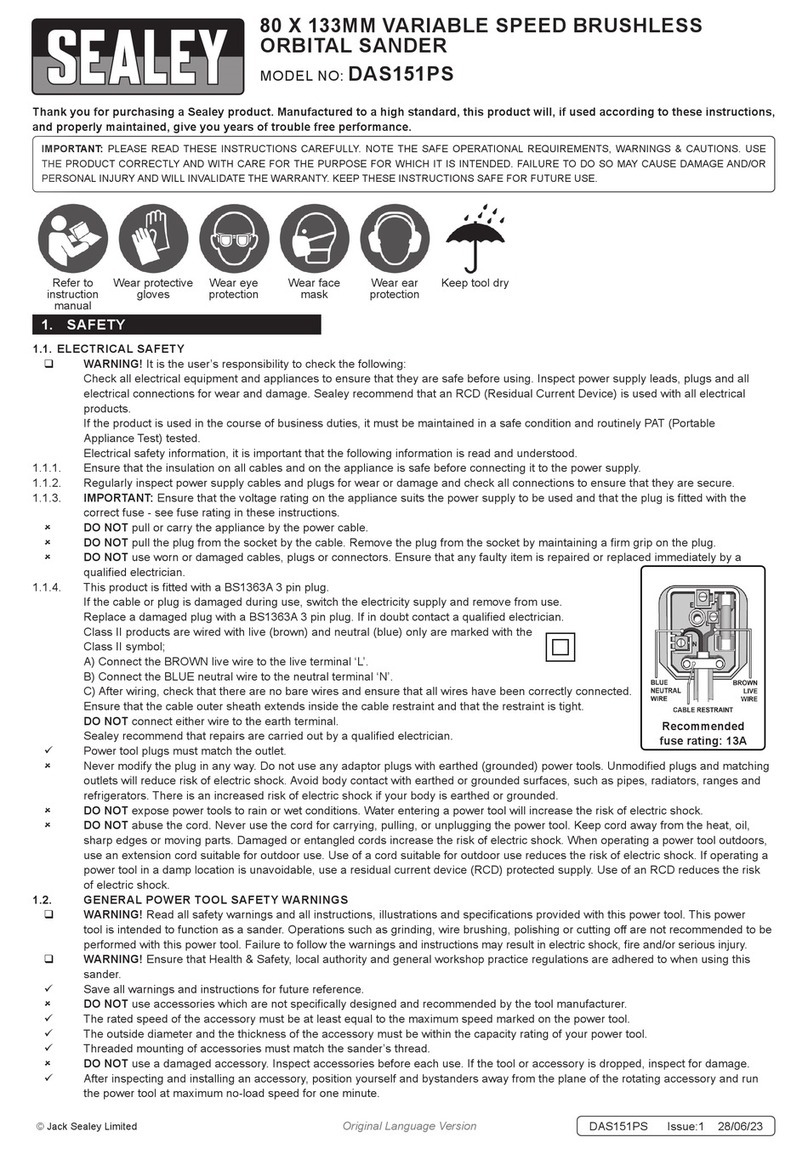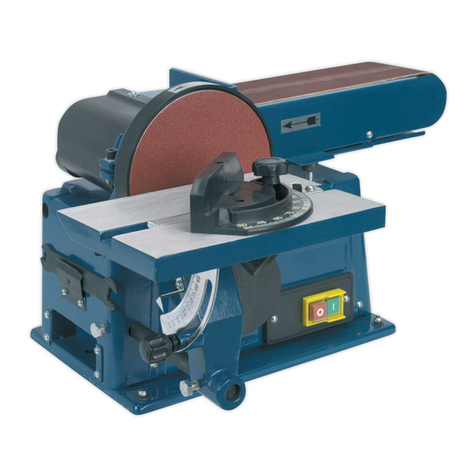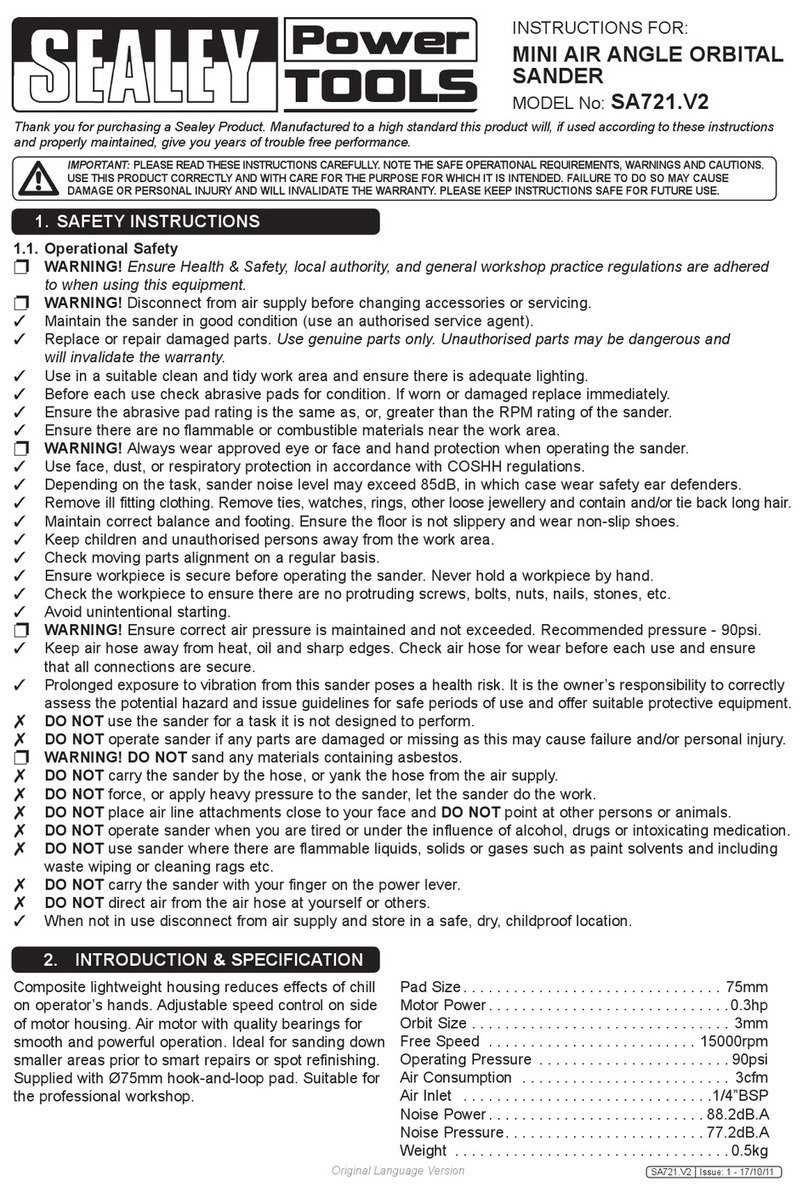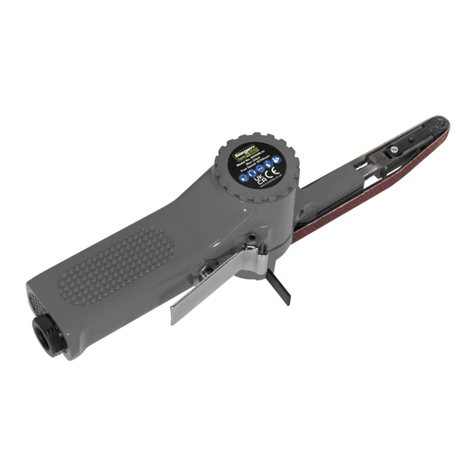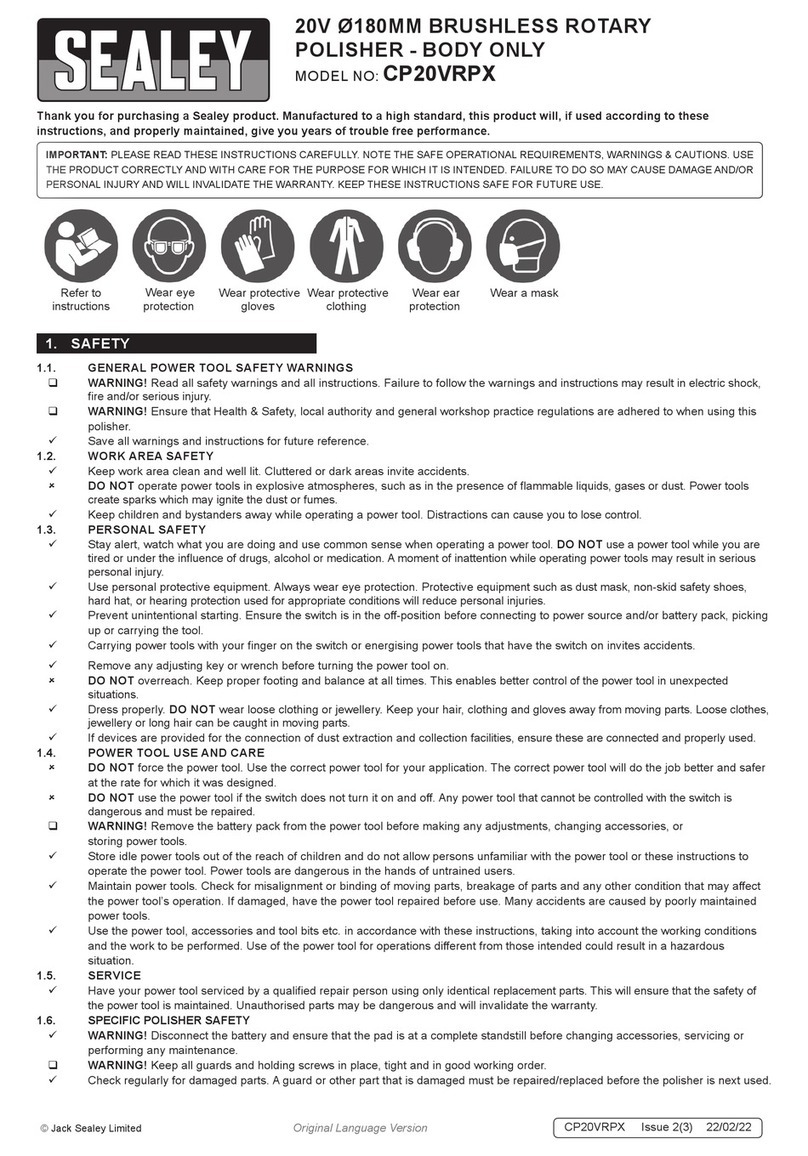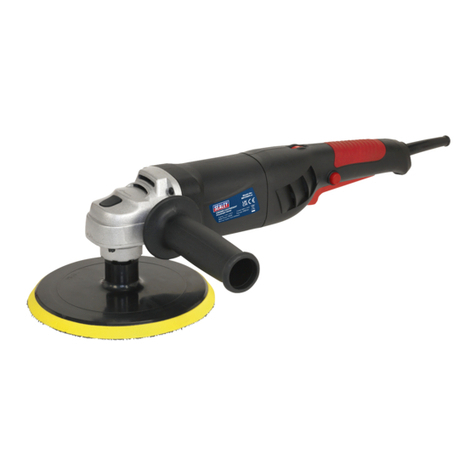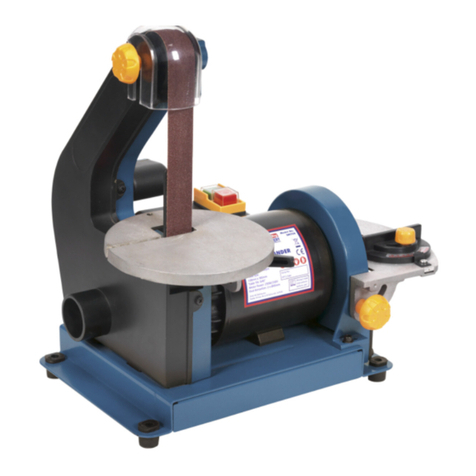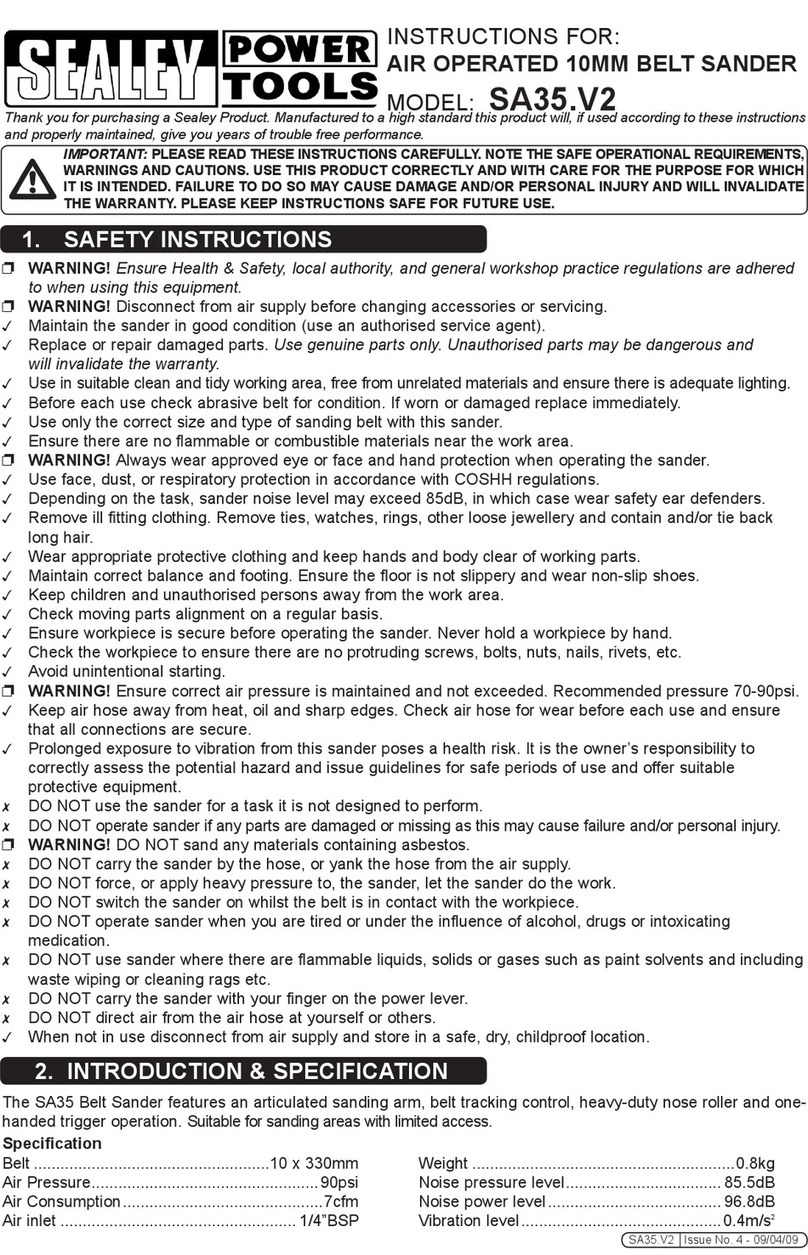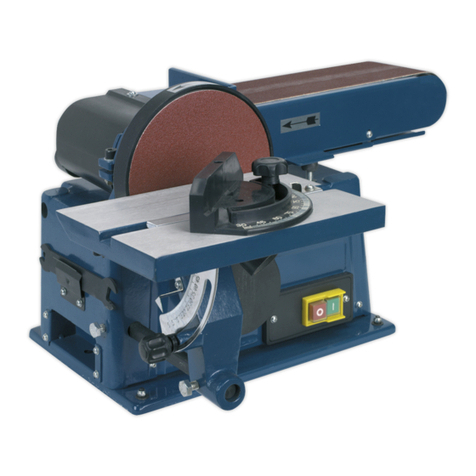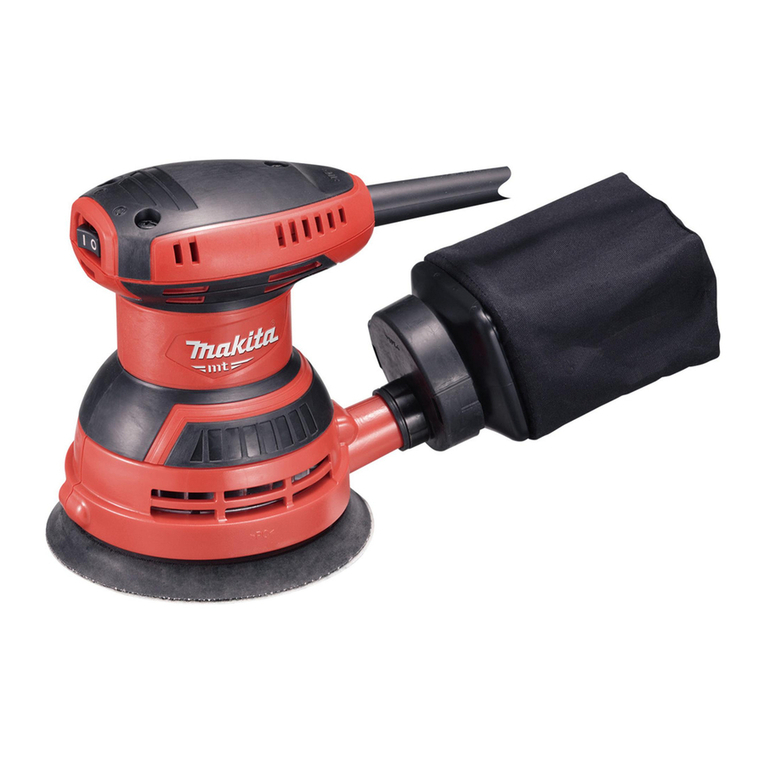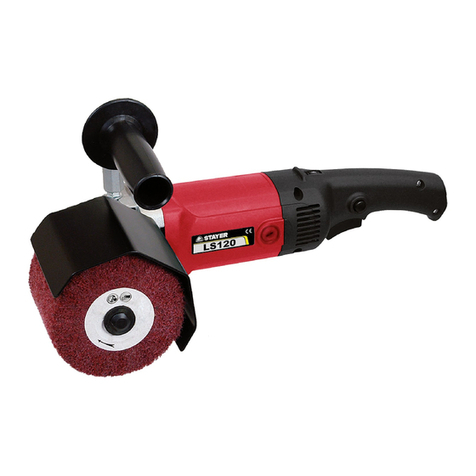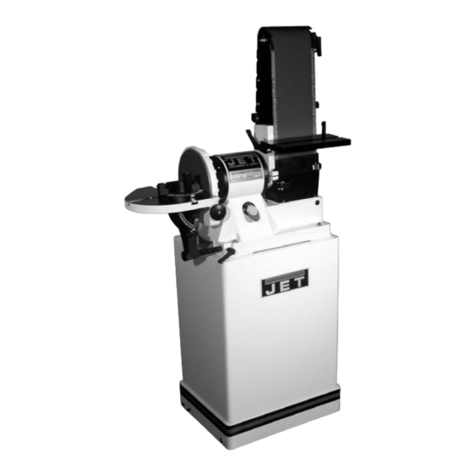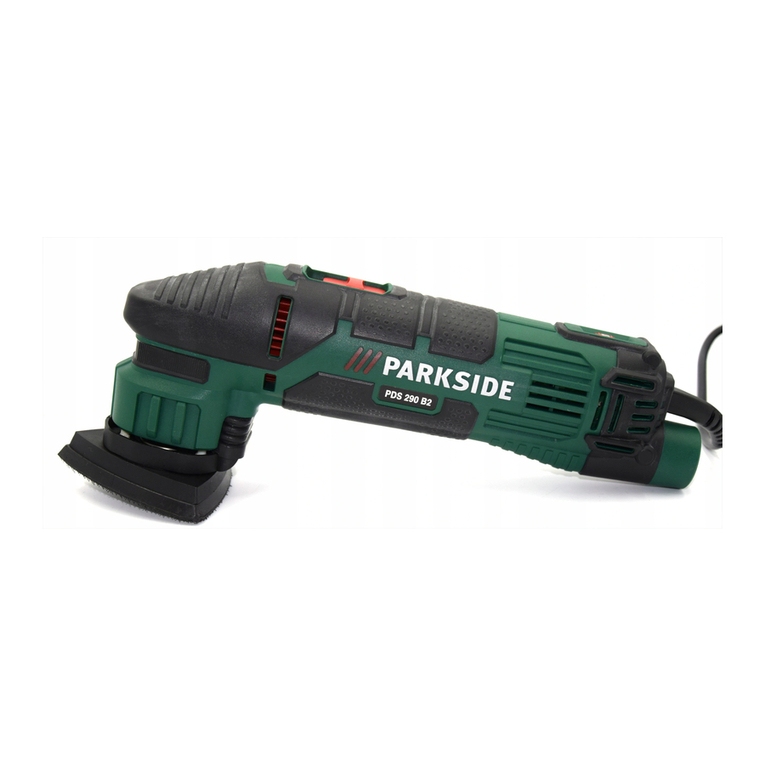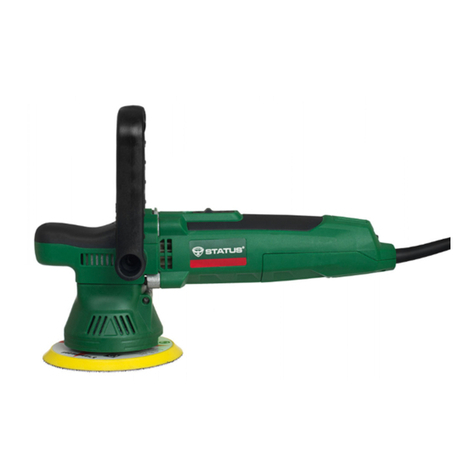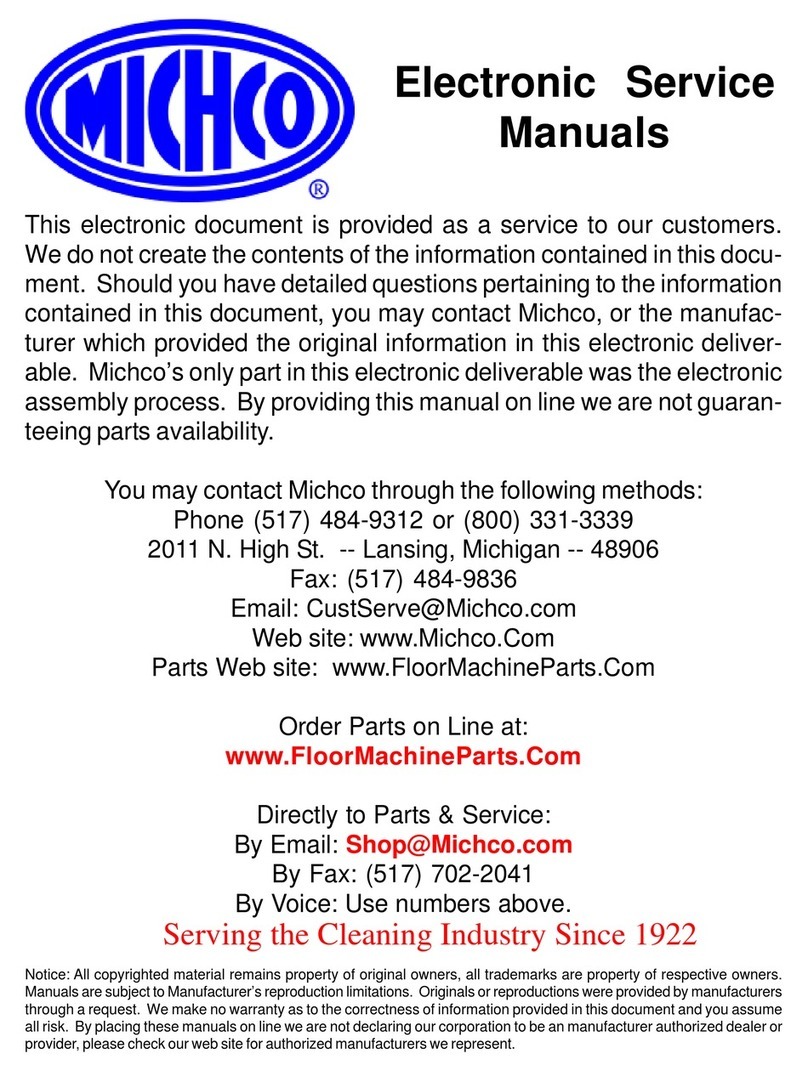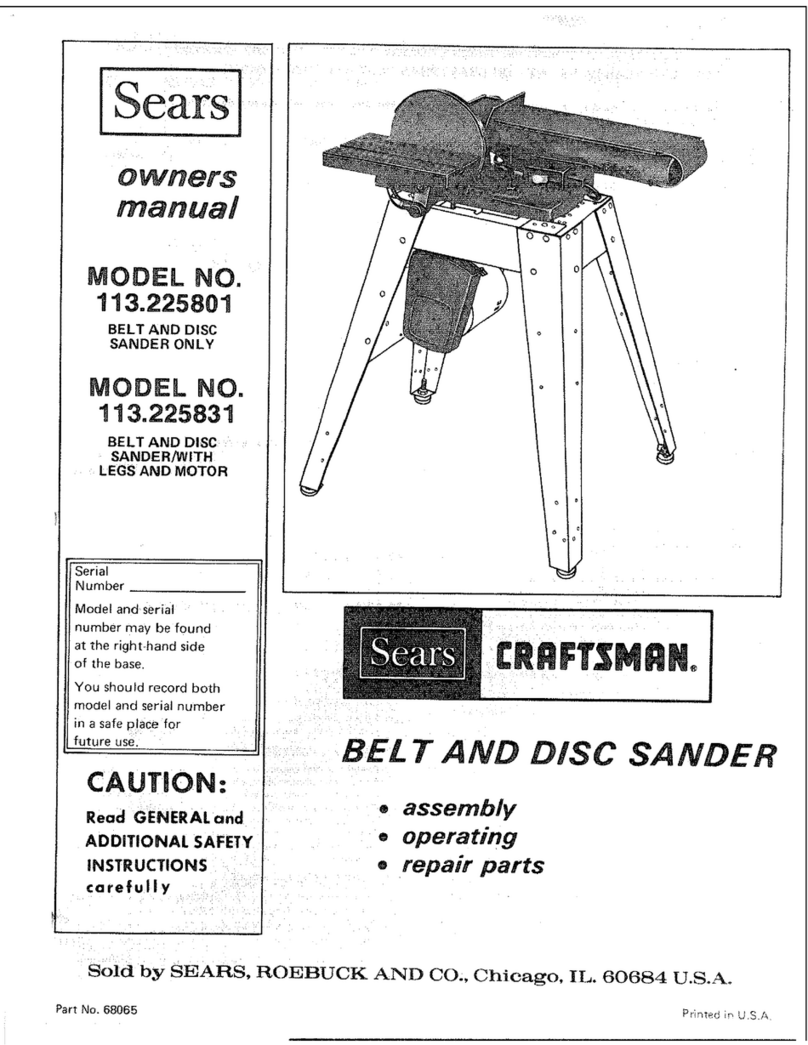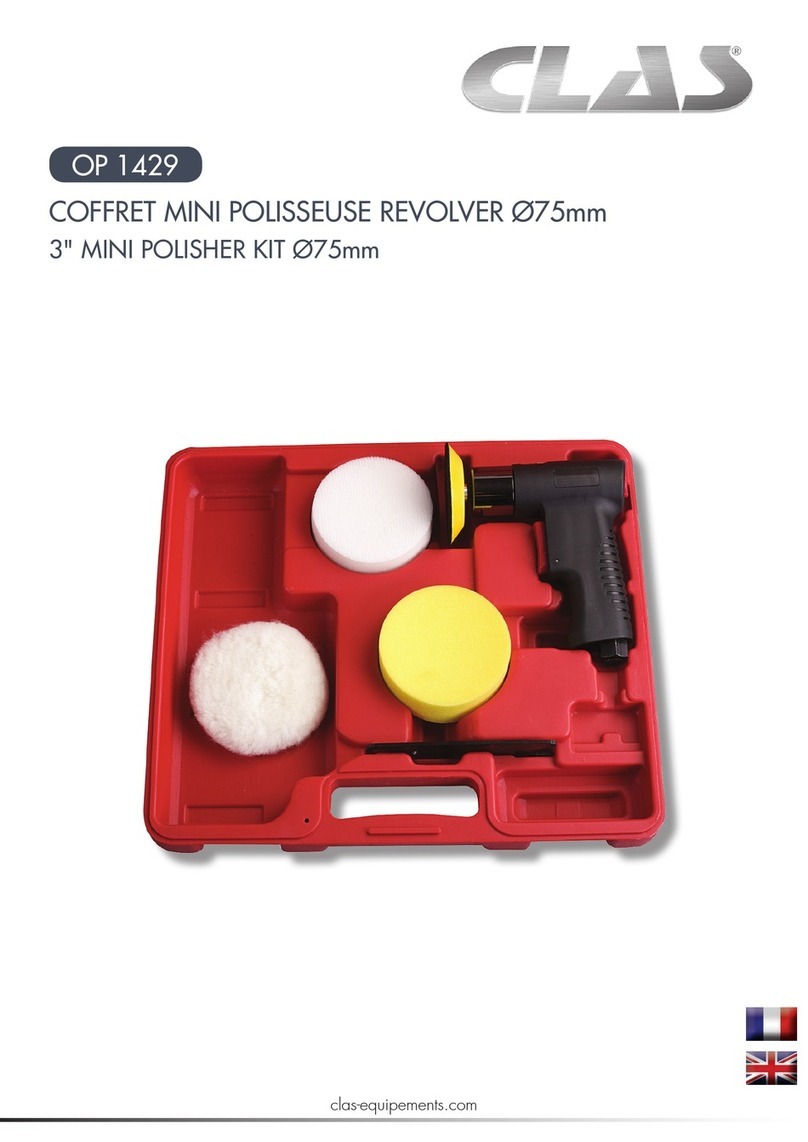
p WARNING!Disconnect sander from air supply before changing accessories, servicing or performing
maintenance.Replace or repair damaged parts. Use genuine parts only. Unauthorised parts may be
dangerous and will invalidate the warranty.
5.1. If the air supply does not have an oiler lubricate the air sander daily with a few drops of good grade air
tool oil such as Sealey ATO/500 or ATO/1000, dripped into the air inlet before use.
5.2. Clean the sander after use and change pads when required.
5.3. Loss of power or erratic action may be due to the following:
a) Excessive drain on the air line. Moisture or restriction in the air pipe. Incorrect size or type of hose
connectors. To remedy check the air supply and follow instructions in Section 3.
b) Grit or gum deposits in the sander may also reduce performance. If your model has an air strainer
(located in the area of the air inlet), remove the strainer and clean it. Flush the sander out with gum
solvent oil or an equal mixture of SAE No 10 oil and kerosene. Allow to dry before use.
If problems continue, contact your local Sealey service agent.
5.4. For a full service contact your local Sealey service agent.
5.5. When not in use, disconnect from air supply, clean sander and store in a safe, dry, childproof location.
4. OPERATING INSTRUCTIONS
5. MAINTENANCE
pWARNING! Ensure you read, understand and apply the safety instructions in Section 1 before use.
4.1. Assembly
4.1.1. Fit backing pad and sanding disc. Use only discs with speed ratings equal to or higher than the speed
rating of the sander. DO NOT use cloth backed sanding discs.
4.1.2. Connect air supply to sander, press the control valve lever and check that the sander is working correctly.
4.1.3. The air flow may be regulated by adjusting the regulator valve in the back of the handle.
4.2. Operating
The sander is designed to provide a combined “rotary” and “random orbit” action.
Always use a grit appropriate for the job. Work progressively from coarse grades to finer grades.
DO NOT go from coarse to fine in one step as it may be difficult to remove swirl marks left by the coarse
grit.
DO NOT apply excessive pressure, let the sander do the work for you. Start the sander and bring the
sanding disc to the work surface evenly and slowly. Move the sander back and forth in overlapping
areas. Remove the sanding disc from the work surface before stopping the sander. Regularly check the
sanding disc for wear, always change if cracked or damaged.
DO NOT allow sander to run in “idle rotation” for an extended period of time, as this will reduce bearing
life.
NOTE: It is our policy to continually improve products and as such we reserve the right to alter data, specifications and component parts without prior notice.
IMPORTANT: No liability is accepted for incorrect use of this product.
WARRANTY: Guarantee is 12 months from purchase date, proof of which will be required for any claim.
INFORMATION: For a copy of our latest catalogue and promotions call us on 01284 757525 and leave your full name and address, including postcode.
01284 757500
01284 703534
sales@sealey.co.uk
Sole UK Distributor, Sealey Group,
Kempson Way, Suffolk Business Park,
Bury St. Edmunds, Suffolk,
IP32 7AR
www.sealey.co.uk
Web
email
Original Language Version SA70 Issue: 1 - 23/05/11
Risk of Hand Arm Vibration Injury.
Mini Air Orbital Sander (Disc 50mm) SA70
, when operated in accordance with these instructions and tested in accordance with
BS EN 28662-1:1993, ISO 8662-1:1988
and BS EN 8662-8:1997
in the following vibration emission declared in accordance with
BS EN12096:1996.
Measured vibration emission value:
6.56
m/s
²
Uncertainty:
2.62
m/s
²
These values are suitable for comparison with emission levels of other tools that have been subject to the same test.
This tool may cause hand-arm vibration syndrome if its use is inadequately managed.
Recommended Measures to reduce risk of hand-arm vibration syndrome:
This tool should not be used by an individual regularly for more than 142 minutes in any 8 hour period.
This duration of use should be reduced if the individual is exposed to hand-arm vibration from other sources.
